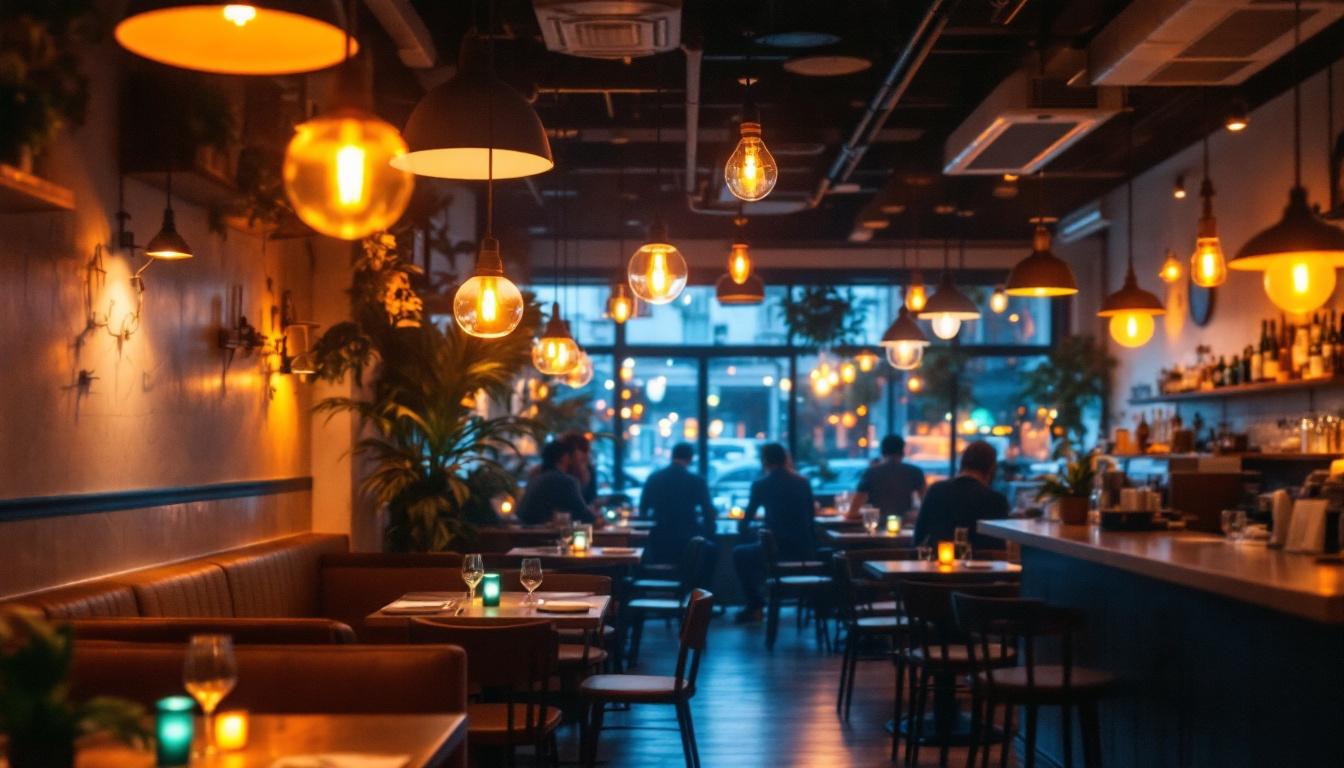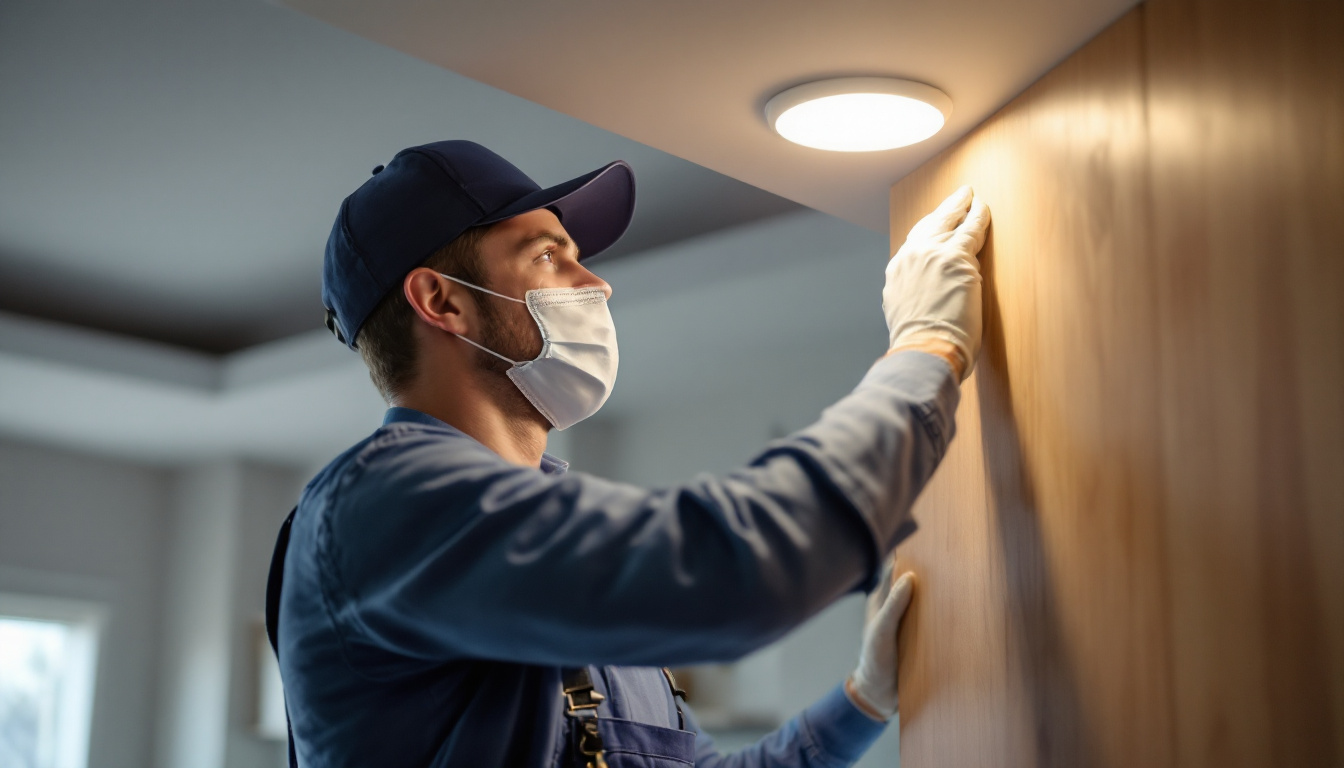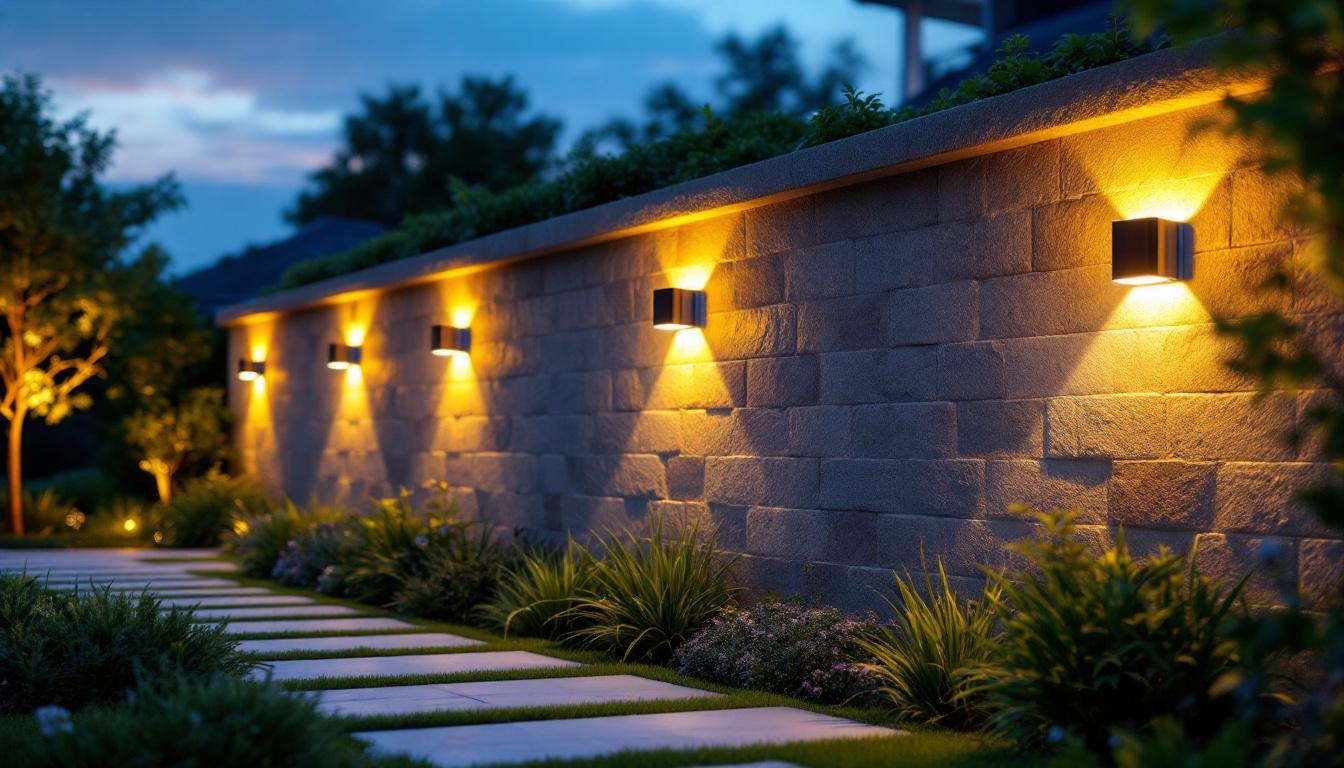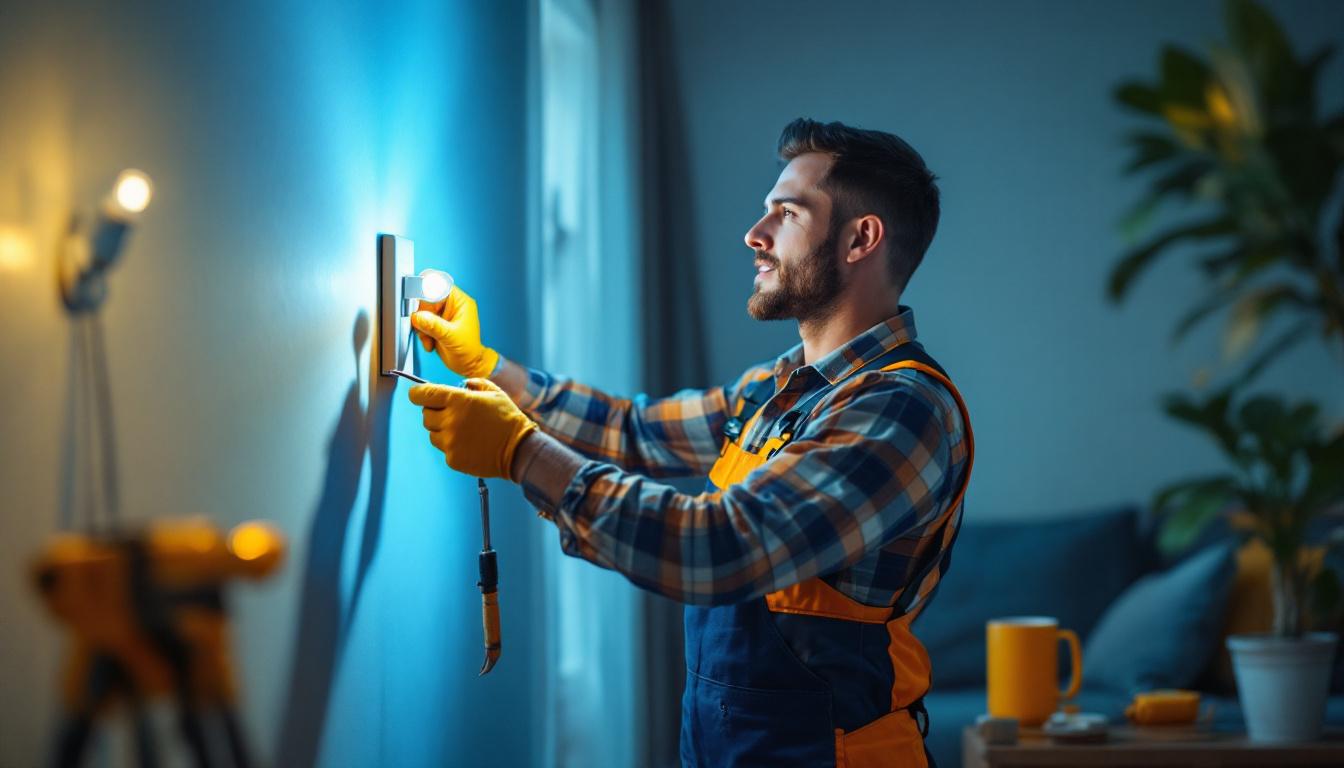
Lighting plays a crucial role in the ambiance and functionality of a restaurant. For lighting contractors, understanding the nuances of restaurant lighting design is essential to meet the unique demands of the hospitality industry. This article delves into the intricacies of restaurant lighting, providing valuable insights for lighting contractors who aim to enhance their projects and deliver exceptional results.
Restaurant lighting goes beyond mere illumination; it shapes the dining experience. The right lighting can create an inviting atmosphere, highlight architectural features, and enhance the presentation of food. For lighting contractors, grasping the significance of lighting in restaurants is the first step toward successful project execution.
The ambiance of a restaurant is often dictated by its lighting. Warm, soft lighting can evoke a sense of comfort and intimacy, while brighter, cooler lighting can energize a space. Lighting contractors must consider the type of dining experience the restaurant aims to provide. For example, a fine dining establishment may benefit from dimmable fixtures that allow for varied lighting levels throughout the evening.
Moreover, the use of color temperature can significantly influence the mood. Warmer tones (around 2700K to 3000K) are typically used in casual dining settings, while cooler tones (above 4000K) may be more appropriate for modern or fast-casual restaurants. Understanding these nuances allows contractors to tailor their lighting designs to meet specific restaurant themes and customer expectations. Additionally, the integration of smart lighting systems can enhance the dining experience further, allowing for dynamic adjustments based on the time of day or specific events, thereby creating a more immersive atmosphere.
Restaurants often have unique architectural elements that deserve attention. Lighting can be strategically employed to accentuate these features, drawing customers’ eyes to focal points such as artwork, decorative walls, or bar areas. For lighting contractors, this means selecting fixtures that not only provide adequate light but also complement the overall design aesthetic.
Track lighting, for instance, can be an effective way to highlight specific areas. Pendant lights over tables can create a cozy atmosphere while simultaneously serving as a design statement. Understanding how to balance functionality with aesthetics is key to creating a visually appealing and practical lighting design. Furthermore, the use of wall sconces or backlit panels can add depth and dimension to a space, making it feel more expansive and inviting. Lighting contractors should also consider the interplay of natural light during the day, which can be enhanced by strategically placed mirrors or reflective surfaces that amplify daylight, creating an ever-changing ambiance that evolves with the time of day.
Various types of lighting serve different purposes in a restaurant setting. Lighting contractors should be familiar with these types to effectively implement them in their designs. Broadly, restaurant lighting can be categorized into three main types: ambient, task, and accent lighting.
Ambient lighting provides the general illumination necessary for patrons to navigate and enjoy their dining experience. It sets the overall mood of the restaurant and should be evenly distributed throughout the space. Common sources of ambient lighting include ceiling-mounted fixtures, chandeliers, and wall sconces.
Contractors should consider the height and placement of these fixtures to avoid creating harsh shadows or overly bright spots. Layering ambient lighting with other types can enhance the overall effect, ensuring that the space feels inviting and comfortable. Additionally, the color temperature of ambient lighting plays a crucial role in establishing the restaurant’s atmosphere; warmer tones can create a cozy and intimate environment, while cooler tones may lend a more modern and energetic feel. The strategic use of dimmers can also allow for adjustments throughout the day, transforming the ambiance from bright and lively during lunch hours to soft and romantic in the evening.
Task lighting is essential for specific activities, such as reading menus or preparing food. In a restaurant, this type of lighting is often found in areas where detailed work takes place, such as the kitchen or at the bar. Pendant lights over counters or tables can provide focused illumination, making it easier for staff and customers alike to perform tasks effectively.
Incorporating dimmable task lighting can offer flexibility, allowing the brightness to be adjusted based on the time of day or the restaurant’s atmosphere. This adaptability is particularly beneficial in establishments that transition from a bustling lunch crowd to a more intimate dinner setting. Furthermore, task lighting can also enhance safety in the kitchen, where proper visibility is crucial for food preparation and cooking. By ensuring that work surfaces are well-lit, restaurants can maintain high standards of hygiene and efficiency, ultimately contributing to a better dining experience for customers.
Accent lighting adds a layer of interest and drama to a restaurant’s design. It is used to highlight specific features, such as artwork, plants, or architectural details. This type of lighting can create visual interest and draw attention to the restaurant’s unique elements.
Lighting contractors can utilize spotlights, wall washers, or even LED strips to achieve effective accent lighting. The key is to ensure that the accent lighting complements the overall design without overwhelming the space. Properly executed accent lighting can elevate the dining experience, making it memorable for guests. Additionally, accent lighting can be creatively used to tell a story about the restaurant’s theme or cuisine, such as using warm, rustic lights to emphasize a farm-to-table concept or sleek, modern fixtures to reflect a contemporary culinary approach. By thoughtfully integrating accent lighting, restaurants can create focal points that not only enhance aesthetics but also engage customers’ senses, encouraging them to explore the space and enjoy their surroundings fully.
The selection of lighting fixtures is a critical aspect of restaurant lighting design. Contractors must consider various factors, including style, functionality, and energy efficiency. The right fixtures can enhance the restaurant’s theme while providing the necessary illumination.
Each restaurant has its own unique theme, and the lighting fixtures should reflect this. For instance, a rustic-themed restaurant may benefit from vintage-style pendant lights or wrought iron fixtures, while a modern eatery might opt for sleek, minimalist designs. Understanding the restaurant’s brand identity is crucial for making informed fixture selections.
Additionally, the scale of the fixtures should be proportional to the space. Oversized chandeliers can create a stunning focal point in a large dining area, while smaller pendant lights may be more appropriate for intimate settings. Lighting contractors should take the time to assess the space and choose fixtures that enhance the overall design.
Functionality is paramount when selecting lighting fixtures for restaurants. Fixtures should provide adequate illumination while also being versatile enough to adapt to different scenarios. Dimmable lights, for example, allow for adjustments in brightness based on the time of day or the type of event being hosted.
Moreover, energy-efficient fixtures, such as LED lights, are becoming increasingly popular in the restaurant industry. Not only do they reduce energy costs, but they also have a longer lifespan, which can be beneficial for restaurant owners looking to minimize maintenance expenses. Lighting contractors should stay informed about the latest technologies and trends to offer their clients the best options available.
Implementing a lighting control system can significantly enhance the functionality and versatility of restaurant lighting. These systems allow for precise control over various lighting elements, enabling contractors to create dynamic environments that can adapt to different situations.
Lighting control systems offer numerous benefits for restaurants. They allow for the customization of lighting levels based on the time of day, special events, or specific customer preferences. This flexibility can enhance the dining experience, making it more enjoyable for patrons.
Additionally, these systems can contribute to energy savings by allowing for automatic adjustments based on occupancy or natural light levels. For contractors, understanding how to integrate these systems into their designs can set them apart from competitors and provide added value to their clients.
There are various types of lighting control systems available, ranging from simple dimmers to sophisticated smart systems. Dimming controls can be easily installed to allow for manual adjustments, while smart systems can be programmed to respond to specific triggers, such as time of day or occupancy sensors.
For contractors, it’s essential to assess the needs of the restaurant and recommend a control system that aligns with their goals. This may involve collaborating with electricians or technology specialists to ensure seamless integration and functionality.
When designing lighting for restaurants, compliance with safety regulations is paramount. Lighting contractors must be aware of local codes and standards that govern electrical installations and lighting design.
Each region has specific electrical codes that must be adhered to during installation. These codes ensure that lighting systems are safe and reliable. Contractors should familiarize themselves with these regulations to avoid potential legal issues and ensure the safety of their installations.
In addition to electrical codes, there may be specific requirements related to emergency lighting, exit signs, and accessibility. Understanding these regulations is crucial for creating a safe environment for both staff and patrons.
Fire safety is another critical aspect of restaurant lighting design. Contractors should ensure that lighting fixtures are installed in a manner that minimizes fire hazards. This includes using appropriate materials and ensuring that fixtures are not placed too close to flammable materials.
Regular maintenance and inspections of lighting systems can also help identify potential issues before they escalate. Contractors should educate restaurant owners about the importance of ongoing maintenance to ensure the longevity and safety of their lighting installations.
In the world of restaurant design, lighting is a powerful tool that can transform a space and enhance the dining experience. For lighting contractors, understanding the intricacies of restaurant lighting is essential to deliver exceptional results. From creating the right atmosphere to selecting the appropriate fixtures and ensuring compliance with safety regulations, each aspect of lighting design plays a vital role in the overall success of a restaurant.
By staying informed about the latest trends, technologies, and best practices, lighting contractors can elevate their projects and provide their clients with innovative and effective lighting solutions. The restaurant industry is ever-evolving, and those who adapt to these changes will undoubtedly thrive in this competitive landscape.
Ready to bring your restaurant lighting designs to life with the best in spec-grade lighting? At LumenWholesale, we provide lighting contractors with an extensive selection of top-quality lighting products at unbeatable wholesale prices. Say goodbye to inflated markups and hello to reliable, high-performance lighting that meets the highest industry standards. With free shipping on bulk orders, you can ensure your projects shine without the burden of hidden fees. Elevate your lighting game and give your clients the ambiance they desire. Discover the perfect blend of quality, affordability, and convenience at Wholesale Lighting at the Best Value with LumenWholesale.

Discover effective strategies for lighting contractors to tackle common challenges with recessed LED downlights.

Discover expert insights and best practices for installing solar outdoor wall mount lights with our comprehensive guide tailored for lighting contractors.

Discover the essential secrets of basic light switches from top lighting contractors.

Discover the key factors that distinguish top lighting contractors when it comes to Tube T8 LED installations.